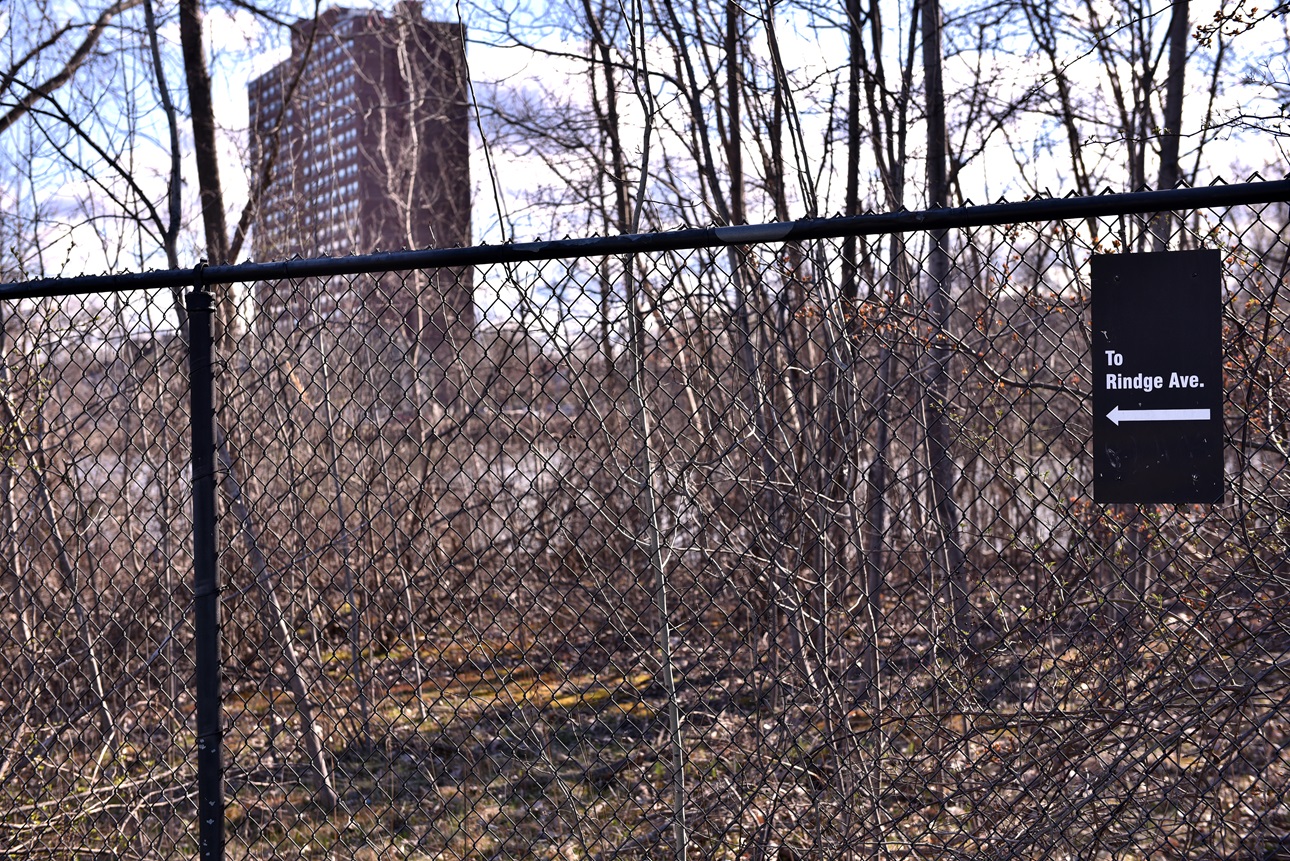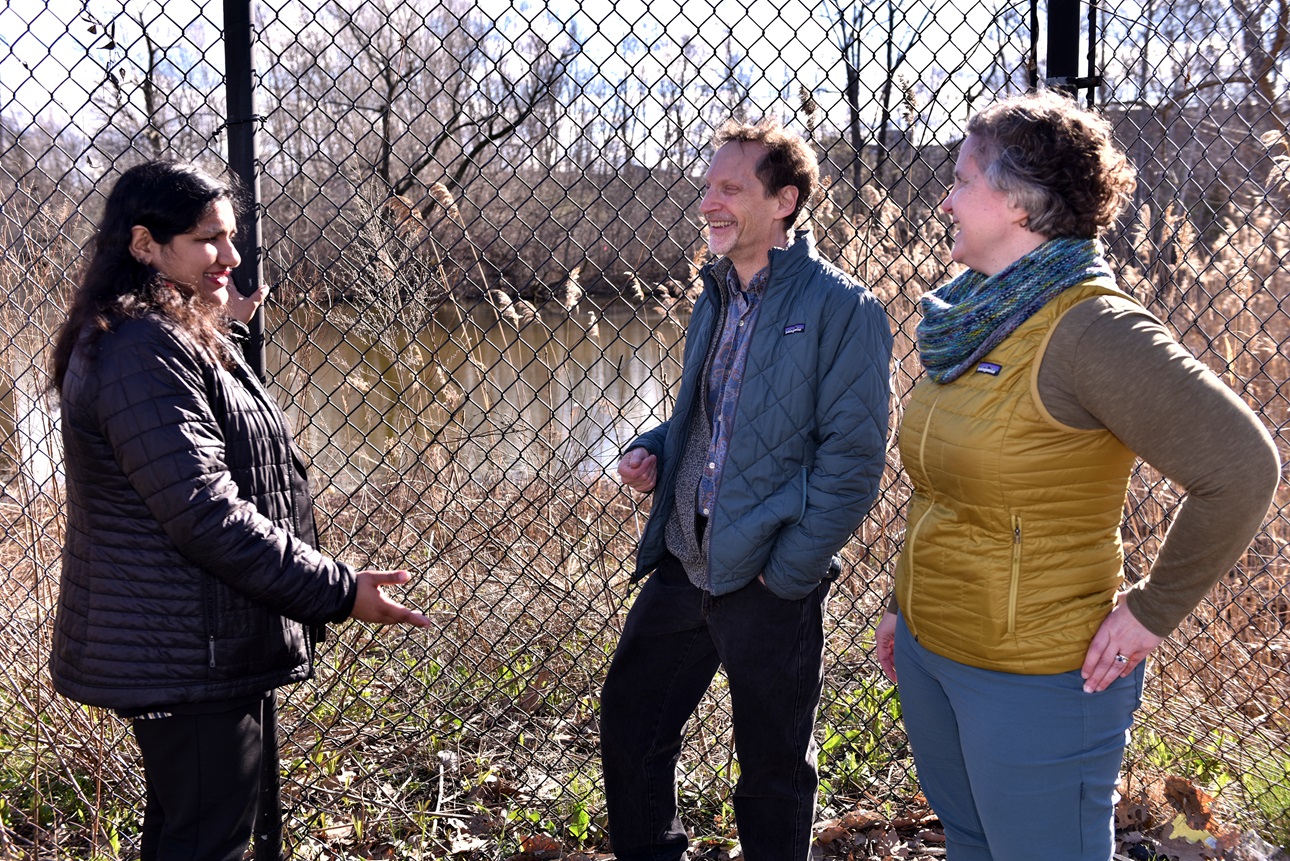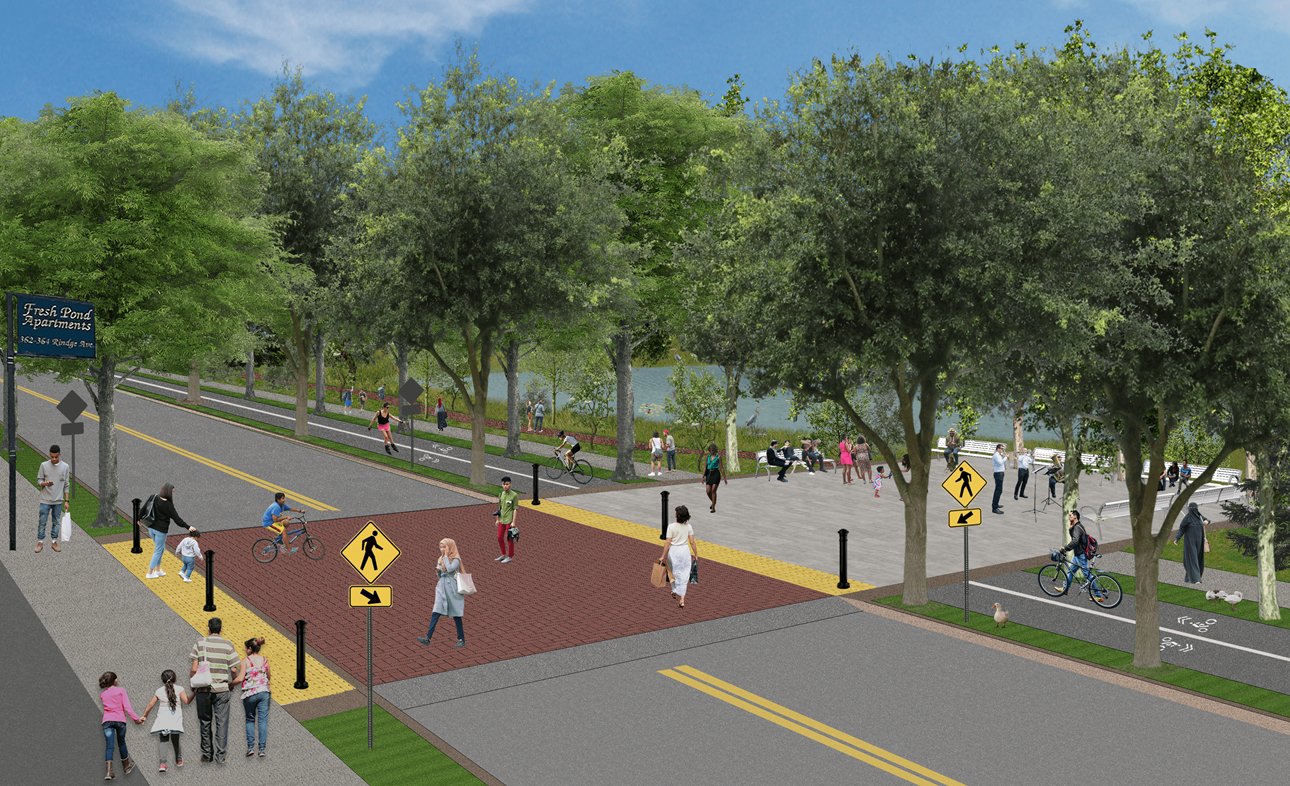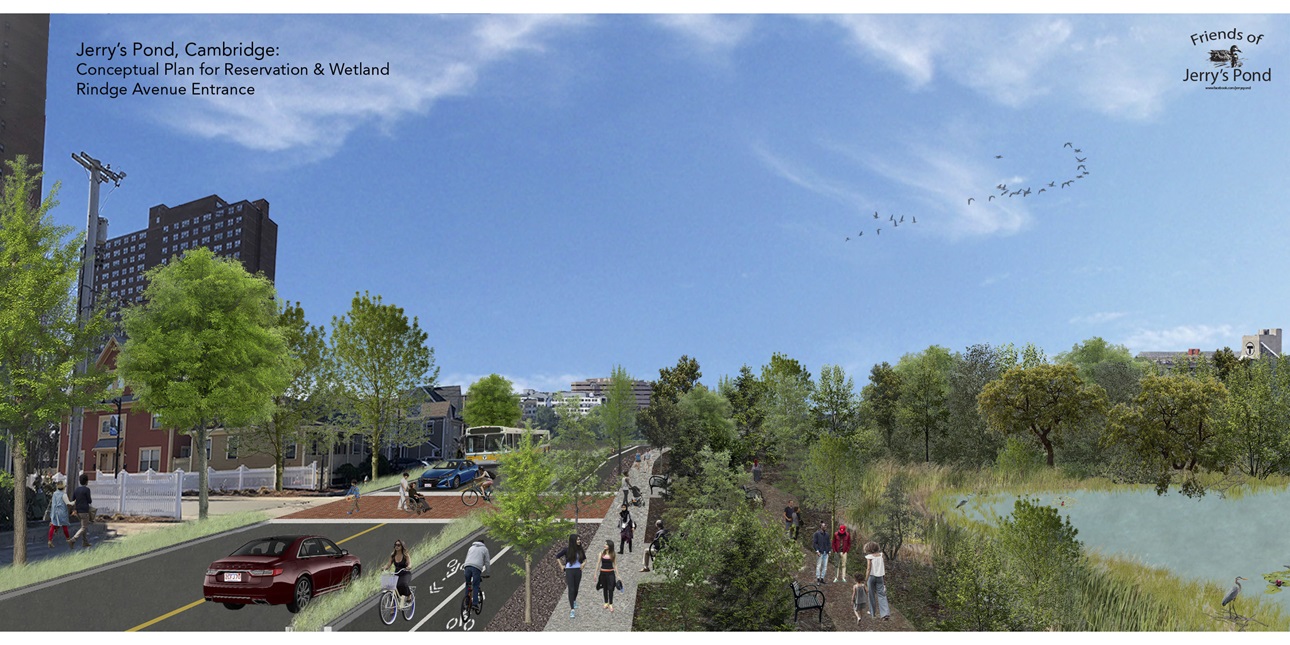Reclaiming Jerry's Pond
How determined donors, activists and others are working together to repair the 'pit that wants to be a pond.'
July 21, 2022
In his current all-consuming project, Boston Foundation donor Eric Grunebaum embodies the Foundation’s ethos: rallying all available assets—from youth energy to donor dollars, from neighborhood input to corporate commitments—in an effort to strengthen a community and advance equity. The project takes place in a corner of North Cambridge that used to be called The Great Swamp, more familiar today as home to the Red Line’s Alewife T stop, the gnarly intersection of Alewife Brook Parkway and Route 2, and the subsidized housing triple high-rise Rindge Towers.
And it centers on a scraggly body of water known as Jerry’s Pond, or “Jerry’s Pit” to old-timers. The pond was the result of a 19th century enterprise digging clay out of the swamp; once the clay was exhausted, the pit was abandoned, and water filled it. Despite the semi-industrial surroundings, the resulting pond became a public swimming hole and gathering place through the 1950s, even supported with a bathhouse built by the property owner, a rubber and chemical plant on nearby Whittemore Avenue. The pond closed when a public pool opened in Cambridge in 1961, and was fenced off by the new landowner, W.R. Grace Co. And there it stayed, even as development exploded around it: Rt. 2 modernized and Rindge Towers completed in the 1970s; Alewife Station built in the early ’80s; and in this century the 1950s’ Arthur D. Little headquarters and turnpike bowling alley giving way to new office parks, labs, and successive waves of high-end apartment buildings.
Periodically, efforts have been made to reclaim and reopen the pond, but its status as private property and fears about pollution had to date stymied those efforts. The latest push, however, with Grunebaum as co-founder of Friends of Jerry’s Pond in the vanguard and a community of activists alongside, may be the magic needed. It brings together local leaders, dedicated residents, and good timing: The land has recently been purchased by life science developer IQHQ, whose development plan comprises elements of improving the 26-acre grounds while building more than 700,000 square feet of lab space. And notably, the pond silt has tested nearly free of dangerous pollutants.
Partners
Among engaged local leaders is Cambridge Mayor Sumbul Siddiqui, who knows the value that accessible green space alongside a pond in this neighborhood could have. “I grew up in the middle tower across the street,” she says. “So this was my front yard. When my dad, who worked three jobs, would come home exhausted, my sister and I would beg him to take us out to the park. And he would. But that meant walking all the way over to Danehy Park.”
Grunebaum has been a persistent force in the effort to repair the longstanding harms of neglect on this site. He has engaged neighbors and young community members in cleaning up and reclaiming the space. He’s advocated for restoring it as an urban nature site, attracting Mass Audubon as a partner in providing environmental education to the community and expertise in ecological restoration. “Eric is an amazing connector,” says Mass Audubon’s Senior Regional Director for Metro Boston Renata Pomponi, adding, “This project fits into our Nature in the City program to protect and restore urban green spaces, provide community access to nature, and improve climate resilience.” Mass Audubon plans to offer programming and educational resources through an on-site “eco-center,” and is working with the developer, who has committed to building boardwalks and a pavilion for the eco-center, as well as offering operating support.
Grunebaum continues his current outreach to local youth in the work to make Jerry’s Pond a reality, saying, “We want to involve kids now, especially from this neighborhood, to give them agency, ownership, and knowledge. Not just after we’ve hopefully brought nature back, but also as it happens, so they see how it is restored, with their participation. Then they’ll understand the process of repair. It’s a small, optimistic example of what needs to happen on a far larger, even global, basis.”
Plans
Contributing what he can through a Donor Advised Fund at the Boston Foundation, he has also spurred fundraising through the Cambridge Community Foundation, where the Friends of Jerry’s Pond Fund is housed, raising around $85,000 so far in gifts of $25 to $25,000, with more required to see the project through. “We propose recreating a new green space along Rindge Ave.,” says Grunebaum. “Today Jerry’s is a rectangular pit with nearly vertical walls, but by reshaping it, enough land could be created for a safe off-street bike lane, more than 150 trees, park benches, a meandering nature path and sloped wetlands at the pond’s edge.” (See below and bottom of page.) In a watershed moment—literally!—the City of Cambridge recently committed $600,000 in ARPA funds to cover design and engineering development
Friends of Jerry’s Pond prioritizes a new community green space and ecological value beyond the initial IQHQ proposal that would retain the near vertical and concrete edges of the pond, cantilevering a boardwalk with about a dozen trees along the edge. Grunebaum reports that IQHQ gave his team about a year to garner funds and backing to develop their plan for the space. The first push—for design and engineering development funding—has been achieved. The total cost for the restoration work and creation of a new park across the street from the environmental justice communities in Rindge Towers is likely around $10 million, he says, adding: “And we’ll firm that up, after the study.”
But the returns will be worth it. “There are literally thousands of affordable housing residents within walking distance,” Grunebaum says. Not only will the natural restoration of the wetland invite more wildlife and native flora, it will bring the neighborhood the mental and physical health benefits that come with proximity to nature. Walkable and bikable neighborhoods encourage physical movement and community gatherings. In addition, developing urban green spaces adds climate resilience to neighborhoods, especially here where concentrations of pavement make it a heat island. “Right now, there’s pavement even where the trees—many of them invasive—are growing,” Grunebaum explains. “There used to be parking lots surrounding the pit, and trees and shrubs have grown up in the cracks and on the few inches of organic material that’s accumulated. So de-paving and replacing that with wetlands will make the area more resilient to big storms and provide relief from heat. A pro bono heat study from Arup engineering suggests a reduction of 90°F ‘feels like’ days from 14 to four. There aren’t a lot of opportunities in dense cities to do this kind of nature restoration along water, but here’s a perfect one right here. A pit that wants to be a pond.”
If you wish to support this effort you may donate online to Friends of Jerry's Pond Field of Interest Fund at the Cambridge Community Foundation.




